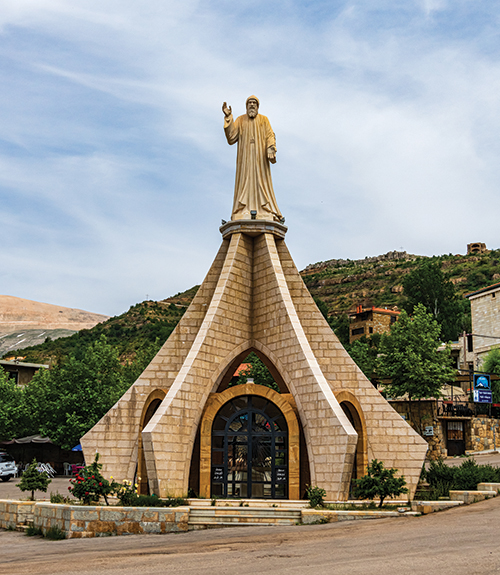
July saint: St. Sharbel Makhlouf
On July 24, the Church honors a saint who represents one of the “two lungs” of the Church, a term coined by Pope St. John Paul II concerning the Maronite and Roman Catholic Church. On the surface, St. Sharbel Makhlouf’s story is not as full of drama as that of Joan of Arc, nor as unexpected as the conversion of St. Paul. However, his steadfast sanctity over a lifetime shows yet another way that the faithful can live a life totally devoted to God.
Born in Lebanon in 1828, Yussef Antoun Makhlouf was the youngest of five children. His early life was marked by tragedy; his father was forcibly removed from his family and subsequently died of hard labor when Yussef was only three years old.
His early years gave an indication of how he would spend the rest of his life. Though educated in the local parish school, Yussef also spent many hours alone tending the family’s cow. Here he would contemplate God amid the grand beauty of the Lebanese landscape.
When he reached adulthood, his uncle and guardian, Tanious, who had little to no regard for Yussef’s obvious piety, pressured the young man to remain working for him. Yussef’s mother hoped that he would follow the usual pattern of other young men and marry. Yussef, however, had decided that neither path was his destiny; at the age of 23, he left home without telling anyone and made his way to the Monastery of St. Maron at Annaya, Lebanon. There he took the name of “Brother Charbel” – also spelled “Sharbel” – in honor of a second-century martyr. In 1853, at the age of 25, he professed his final vows and spent the next six years studying for the priesthood and was ordained in 1859.
For 19 years, Father Makhlouf was content to live a life of prayer, contemplation, and manual labor. He had a special devotion to the Blessed Sacrament and was gaining a reputation as a “wonder worker” even among the neighboring Muslims. In 1875, he was granted permission to live as a solitary monk in a nearby hermitage dedicated to Sts. Peter and Paul. For the next 23 years, he practiced a rigorous asceticism centered on a profound union with God.
At the age of 70, he suffered a stroke while celebrating the Divine Liturgy of the Maronite Catholic Church. He died eight days later on Christmas Eve, 1898.
Since his death, many miracles have been attributed to the saint’s intercession, and his tomb continues to be a popular destination for both Lebanese and non-Lebanese, as well as Catholics and Eastern Orthodox pilgrims.
St. Sharbel Makhlouf is also one of the “Incorruptibles,” a saint whose earthly body has not decomposed after death. Since the earliest days of the Church, this has been considered a sign of very great sanctity.
Canonized in 1977 by Pope Paul VI, St. Sharbel Makhlouf is patron of those who suffer in body and soul. His feast is July 24.

